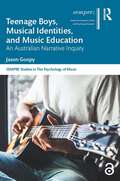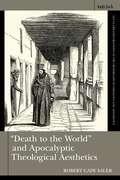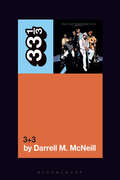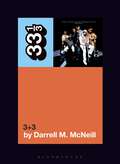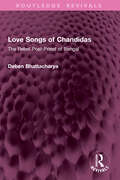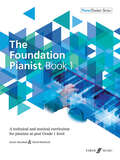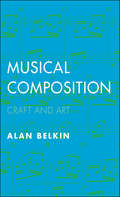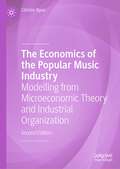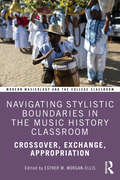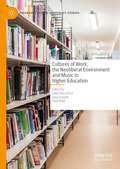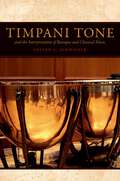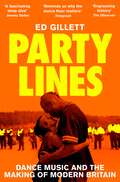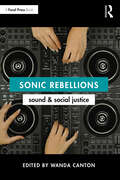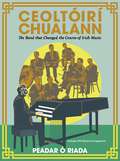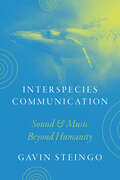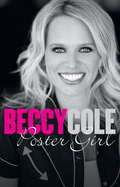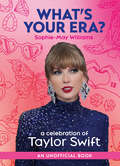- Table View
- List View
FL Studio Cookbook: The lofi, retrowave, and horror music chef's guide to FL Studio music production
by Chris RenaElevate your music production skills with expert help and confidently create unique melodies, soundscapes, and fully mastered tracksKey FeaturesExplore FL Studio's essential features and plugins with expert guidance and a practical, recipe-based approachCreate captivating melodies for your tracks, then mix and master them like a professionalDelve deep into sound design techniques, automation, and FX creation for crafting dynamic music compositionsPurchase of the print or Kindle book includes a free PDF eBookBook DescriptionWhether it's overcoming creative blocks, troubleshooting technical issues, or refining your workflow, every budding producer faces challenges. The FL Studio Cookbook is here to provide practical solutions to common problems, empowering you to navigate any obstacle with ease by exploring one of the most renowned, industry-standard DAWs. The recipe-based approach of this book means that you’ll unlock the secrets of crafting captivating melodies and learn the art of composition with practical, step-by-step instructions, discovering how to construct melodies that evoke emotion and leave a lasting impression. From chord progressions to counterpoint, you’ll get actionable insights to help you compose music that resonates with your audience. You’ll also master the intricacies of mixing and mastering, by familiarizing yourself with the entire process from balancing levels and sculpting sounds to applying effects. You’ll also explore the endless possibilities of sculpting sound from scratch, whether you're crafting custom synths, designing unique textures, or layering effects to create otherworldly sounds. By the end of this book, you'll have acquired the skills to confidently craft professional-quality lofi, retrowave, and horror music tracks, gaining the expertise to express your musical vision and take your music production to new heights.What you will learnNavigate the FL Studio interface and utilize essential features effectivelyCraft captivating melodies, harmonies, and chord progressions for your musicManipulate samples to add depth and texture to your tracksMaster the art of mixing, including balancing levels, applying EQ, and using effectsHarness the potential of FL Studio's extensive plugin collectionCreate dynamic tracks using automation techniquesEmploy sound design techniques to craft unique sounds and FXOptimize your workflow and productivity with timesaving strategiesWho this book is forThe book is for audio professionals, especially music producers and sound designers who want to get a more thorough understanding of FL Studio and how to use its features to create catchy melodies for their productions. The book assumes a basic understanding of Digital Audio Workstations (DAWs), prior experience with the mix workflow (import, edit, mix, FX).
Teenage Boys, Musical Identities, and Music Education: An Australian Narrative Inquiry (ISSN)
by Jason GoopyMusic is a powerful process and resource that can shape and support who we are and wish to be. The interaction between musical identities and learning music highlights school music education’s potential contributions and responsibilities, especially in supporting young people’s mental health and well-being. Through the distinctive stories and drawings of Aaron, Blake, Conor, Elijah, Michael, and Tyler, this book reveals the musical identities of teenage boys in their final year of study at an Australian boys’ school.This text serves as an interface between music, education, and psychology using narrative inquiry. Previous research in music education often seeks to generalise boys, whereas this study recognises and celebrates the diverse individual voices of students where music plays a significant role in their lives. Adolescent boys’ musical identities are examined using the theories of identity work and possible selves, and their underlying music values and uses are considered important guiding principles and motivating goals in their identity construction. A teaching and learning framework to shape and support multiple musical identities in senior secondary class music is presented.The relatable and personal stories in this book will appeal to a broad readership, including music teachers, teacher educators, researchers, and readers interested in the role of music in our lives. Creative and arts-based research methods, including narrative inquiry and innovative draw and tell interviews, will be particularly relevant for research method courses and postgraduate research students.
Teenage Boys, Musical Identities, and Music Education: An Australian Narrative Inquiry (ISSN)
by Jason GoopyMusic is a powerful process and resource that can shape and support who we are and wish to be. The interaction between musical identities and learning music highlights school music education’s potential contributions and responsibilities, especially in supporting young people’s mental health and well-being. Through the distinctive stories and drawings of Aaron, Blake, Conor, Elijah, Michael, and Tyler, this book reveals the musical identities of teenage boys in their final year of study at an Australian boys’ school.This text serves as an interface between music, education, and psychology using narrative inquiry. Previous research in music education often seeks to generalise boys, whereas this study recognises and celebrates the diverse individual voices of students where music plays a significant role in their lives. Adolescent boys’ musical identities are examined using the theories of identity work and possible selves, and their underlying music values and uses are considered important guiding principles and motivating goals in their identity construction. A teaching and learning framework to shape and support multiple musical identities in senior secondary class music is presented.The relatable and personal stories in this book will appeal to a broad readership, including music teachers, teacher educators, researchers, and readers interested in the role of music in our lives. Creative and arts-based research methods, including narrative inquiry and innovative draw and tell interviews, will be particularly relevant for research method courses and postgraduate research students.
"Death to the World" and Apocalyptic Theological Aesthetics (T&T Clark Explorations at the Crossroads of Theology and Aesthetics)
by Robert Cady SalerRobert Saler examines the small but influential Death to the World movement in US Eastern Orthodox Christianity. Presenting a case study in theological aesthetics, Saler demonstrates how a relatively small consumer phenomenon within US Eastern Orthodoxy sits at the centre of a variety of larger questions, including:- The relationship between formal ecclesial and para-church structures - The role of the Internet in modern religiosity - Consumer structures and patterns as constitutive of piety- How theology can help us understand art and vice versaUnderstanding "Death to the World" as an instance of lived religion tied to questions of identity, politics of religious purity, relationships to capitalism, and concerns over conspiracy theory helps us to see how studies of uniquely American Eastern Orthodox identity must address these broader cultural strands.
"Death to the World" and Apocalyptic Theological Aesthetics (T&T Clark Explorations at the Crossroads of Theology and Aesthetics)
by Robert Cady SalerRobert Saler examines the small but influential Death to the World movement in US Eastern Orthodox Christianity. Presenting a case study in theological aesthetics, Saler demonstrates how a relatively small consumer phenomenon within US Eastern Orthodoxy sits at the centre of a variety of larger questions, including:- The relationship between formal ecclesial and para-church structures - The role of the Internet in modern religiosity - Consumer structures and patterns as constitutive of piety- How theology can help us understand art and vice versaUnderstanding "Death to the World" as an instance of lived religion tied to questions of identity, politics of religious purity, relationships to capitalism, and concerns over conspiracy theory helps us to see how studies of uniquely American Eastern Orthodox identity must address these broader cultural strands.
The Isley Brothers' 3+3 (33 1/3)
by Darrell M. McNeillThe Isley Brothers' 3+3, dissects The Isleys' 50-year-old undisputed masterwork, an album that firmly established their music dynasty on a global scale, as well as heralding the boldest run of genre-defiant albums of their 67-year career. The 1973 watershed was their first multiplatinum release and is significant as a rare, crossover record by a Black act that struck a chord with urban, rock, and pop consumers, despite the schisms between audiences due to bias-driven media and industry marketing.The book looks at the album from all angles: from The Isleys' early career to their influence on rock and rollers both Black and White, from the twists and turns of having national hits without national recognition, on to their decision to form T-Neck Records and the group's challenges navigating a music industry that racially codified music and hampered Black artists from universal acclaim and compensations. Finally, a summation of the decades follows The Isleys' run and its ups and downs, with a fast-forward to where the group is now after 67 years.
The Isley Brothers' 3+3 (33 1/3)
by Darrell M. McNeillThe Isley Brothers' 3+3, dissects The Isleys' 50-year-old undisputed masterwork, an album that firmly established their music dynasty on a global scale, as well as heralding the boldest run of genre-defiant albums of their 67-year career. The 1973 watershed was their first multiplatinum release and is significant as a rare, crossover record by a Black act that struck a chord with urban, rock, and pop consumers, despite the schisms between audiences due to bias-driven media and industry marketing.The book looks at the album from all angles: from The Isleys' early career to their influence on rock and rollers both Black and White, from the twists and turns of having national hits without national recognition, on to their decision to form T-Neck Records and the group's challenges navigating a music industry that racially codified music and hampered Black artists from universal acclaim and compensations. Finally, a summation of the decades follows The Isleys' run and its ups and downs, with a fast-forward to where the group is now after 67 years.
Love Songs of Chandidas: The Rebel Poet-Priest of Bengal (Routledge Revivals)
by Deben BhattacharyaFirst published in 1967, Love Songs of Chandidās provides an informative introduction which makes vividly clear the importance of Chandidās to the Indian peasant masses. As the author tells us, the traveller through the Birbhum area of Bengal hears Chandidās everywhere, in the villages, in the fields, on the roads. Night after night, the people gather in the temple courtyards or on the village greens to listen to professional ‘Kirtan’ singers sing his songs of the divine love of Radha and Krishna. The influence of Chandidās on contemporary Bengali literature is equally important, his songs having enriched the work of great poets such as Rabindranath Tagore, Govindadas, and many others. The author also discusses the interesting topic of the Sahaja (‘spontaneity’) movement in Indian faith and literature, as manifested in the songs of Chandidās, and the worship of love-making, divine and human, as an important aspect of this faith. This book will be of interest to students of literature, music, history, cultural studies and South Asian studies.
Love Songs of Chandidas: The Rebel Poet-Priest of Bengal (Routledge Revivals)
First published in 1967, Love Songs of Chandidās provides an informative introduction which makes vividly clear the importance of Chandidās to the Indian peasant masses. As the author tells us, the traveller through the Birbhum area of Bengal hears Chandidās everywhere, in the villages, in the fields, on the roads. Night after night, the people gather in the temple courtyards or on the village greens to listen to professional ‘Kirtan’ singers sing his songs of the divine love of Radha and Krishna. The influence of Chandidās on contemporary Bengali literature is equally important, his songs having enriched the work of great poets such as Rabindranath Tagore, Govindadas, and many others. The author also discusses the interesting topic of the Sahaja (‘spontaneity’) movement in Indian faith and literature, as manifested in the songs of Chandidās, and the worship of love-making, divine and human, as an important aspect of this faith. This book will be of interest to students of literature, music, history, cultural studies and South Asian studies.
The Foundation Pianist Book 1: A Technical and Musical Curriculum for Pianists at Post Grade 1 Level (Faber Edition: Piano Trainer #Bk 1)
by Karen Marshall David BlackwellThe Foundation Pianist is a set of two books by David Blackwell and Karen Marshall for students beyond the beginner stage who want to develop a technical and musical foundation to help them progress on to intermediate levels. Exploring piano technique through a variety of elements, the books include daily exercises, sight-reading, repertoire and musical time travel. This series not only develops students’ technique, reading, theory and musicianship, but also provides an invaluable insight into the world of classical music, from madrigals to symphonies and operas to concertos. The Foundation Pianist Book 1 forms part of the PianoTrainer series.
Musical Composition: Craft and Art
by Alan BelkinAn invaluable introduction to the art and craft of musical composition from a distinguished teacher and composerThis essential introduction to the art and craft of musical composition is designed to familiarize beginning composers with principles and techniques applicable to a broad range of musical styles, from concert pieces to film scores and video game music. The first of its kind to utilize a style-neutral approach, in addition to presenting the commonly known classical forms, this book offers invaluable general guidance on developing and connecting musical ideas, building to a climax, and other fundamental formal principles. It is designed for both classroom use and independent study.
The Economics of the Popular Music Industry: Modelling from Microeconomic Theory and Industrial Organization
by Christie ByunThis book uses economic theory to explain how consumers and producers have responded to major changes in the music industry. Byun examines the important role of technology in changing its structure, particularly as new methods of creating and accessing music prove to be a double-edged sword for creators and producers. This second edition includes new information about concert attendance and live performance in the COVID era and what followed, as well as the resultant economic impacts on the industry. Throughout the book, Byun questions how the business of music affects creativity and the extent to which this impacts the creative output of the individual artist. Chapters also address copyright enforcement and online piracy. This is an approachable resource for economists interested in the music industry as well as business and music majors studying the ways in which technology can impact a creative process.
Navigating Stylistic Boundaries in the Music History Classroom: Crossover, Exchange, Appropriation (Modern Musicology and the College Classroom)
At a time of transformation in the music history classroom and amid increasing calls to teach a global music history, Navigating Stylistic Boundaries in the Music History Classroom adds nuance to the teaching of varied musical traditions by examining the places where they intersect and the issues of musical exchange and appropriation that these intersections raise. Troubling traditional boundaries of genre and style, this collection of essays helps instructors to denaturalize the framework of Western art music and invite students to engage with other traditions—vernacular, popular, and non-Western—on their own terms.The book draws together contributions by a wide range of active scholars and educators to investigate the teaching of music history around cases of stylistic borders, exploring the places where different practices of music and values intersect. Each chapter in this collection considers a specific case in which an artist or community engages in what might be termed musical crossover, exchange, or appropriation and delves deeper into these concepts to explore questions of how musical meaning changes in moving across worlds of practice. Addressing works that are already widely taught but presenting new ways to understand and interpret them, this volume enables instructors to enrich the perspectives on music history that they present and to take on the challenge of teaching a more global music history without flattening the differences between traditions.
Navigating Stylistic Boundaries in the Music History Classroom: Crossover, Exchange, Appropriation (Modern Musicology and the College Classroom)
by Esther M. Morgan-EllisAt a time of transformation in the music history classroom and amid increasing calls to teach a global music history, Navigating Stylistic Boundaries in the Music History Classroom adds nuance to the teaching of varied musical traditions by examining the places where they intersect and the issues of musical exchange and appropriation that these intersections raise. Troubling traditional boundaries of genre and style, this collection of essays helps instructors to denaturalize the framework of Western art music and invite students to engage with other traditions—vernacular, popular, and non-Western—on their own terms.The book draws together contributions by a wide range of active scholars and educators to investigate the teaching of music history around cases of stylistic borders, exploring the places where different practices of music and values intersect. Each chapter in this collection considers a specific case in which an artist or community engages in what might be termed musical crossover, exchange, or appropriation and delves deeper into these concepts to explore questions of how musical meaning changes in moving across worlds of practice. Addressing works that are already widely taught but presenting new ways to understand and interpret them, this volume enables instructors to enrich the perspectives on music history that they present and to take on the challenge of teaching a more global music history without flattening the differences between traditions.
Cultures of Work, the Neoliberal Environment and Music in Higher Education (Palgrave Critical University Studies)
by Sally Macarthur Julja Szuster Paul WattThis edited book considers the impact of neoliberalism on music teaching, research and scholarship in a higher education context. As a subject that bears little resemblance to other university practical disciplines, and fares poorly in a model driven by economics, the book considers whether musicology is a ‘public good’ or a threatened species. It contemplates what musicology can usefully contribute to a paradigm driven by economics, and questions whether it is ever possible to recover an ideal civil subject in neoliberal music academia. Contributions investigate what it means to build music research capacity in innovative ways, such as forging cross-cultural relationships, subverting conventional notions of quality and value, replacing them with knowledges and values that guide Indigenous intellectual traditions, and whether interventions into the legacy of colonialism are truly ever possible in neoliberal higher education institutions that celebrate difference and diversitywhile reinforcing social inequities. The book also explores the relationships between gender and music, music research training and scholarship, and whether the interdisciplinarity championed by the university is ever workable. Finally, it undertakes a cross-disciplinary, new materialist reading of a canonical musical work, offering a radically new perspective. The book will appeal to students and scholars of music education, musicology, higher education studies and the creative arts more broadly.
Timpani Tone and the Interpretation of Baroque and Classical Music
by Steven L. SchweizerTimpani Tone and the Interpretation of Baroque and Classical Music explores the nature, production, and evolution of timpani tone and provides insights into how to interpret the music of J. S. Bach, Handel, Haydn, and Mozart. In drawing on 31 years of experience, Steven L. Schweizer focuses on the components of timpani tone and methods for producing it. In so doing, he discusses the importance of timpani bowl type; mallets; playing style; physical gestures; choice of drums; mallet grip; legato, marcato, and staccato strokes; playing different parts of the timpano head; and psychological openness to the music in effectively shaping and coloring timpani parts. In an acclaimed chapter on interpretation, Schweizer explores how timpanists can use knowledge of the composer's style, psychology, and musical intentions; phrasing and articulation; the musical score; and a conductor's gestures to effectively and convincingly play a part with emotional dynamism and power. The greater part of the book is devoted to the interpretation of Baroque and Classical orchestral and choral music. Meticulously drawing on original sources and authoritative scores from the seventeenth through nineteenth centuries, Schweizer convincingly demonstrates that timpanists were capable of producing a broader range of timpani tone earlier than is normally supposed. The increase in timpani size, covered timpani mallets, and thinner timpani heads increased the quality of timpani tone; therefore, today's timpanist's need not be entirely concerned with playing with very articulate sticks. In exhaustive sections on Bach, Handel, Haydn, and Mozart, Schweizer takes the reader on an odyssey through the interpretation of their symphonic and choral music. Relying on Baroque and Classical performance practices, timpani notation, the composer's musical style, and definitive scores, he interprets timpani parts from major works of these composers. Schweizer pays particular attention to timpani tone, articulation, phrasing, and dynamic contouring: elements necessary to effectively communicate their part to listeners.
Party Lines: Dance Music and the Making of Modern Britain
by Ed Gillett'[An] excellent history of UK dance culture' – Sunday TimesFrom the illicit reggae blues dances and acid-rock free festivals of the 1970s, through the ecstasy-fuelled Second Summer of Love in 1988 to the increasingly corporate dance music culture of the post-Covid era, Party Lines is a groundbreaking new history of UK dance music from journalist and filmmaker Ed Gillett, exploring its pivotal role in the social, political and economic shifts on which modern Britain has been built.Taking in the Victorian moralism of the Thatcher years, the far-reaching restrictions of the Criminal Justice Act in 1994, and the resurgence of illegal raves during the Covid-19 pandemic, Party Lines charts an ongoing conflict, fought in basement clubs, abandoned warehouses and sunlit fields, between the revolutionary potential of communal sound and the reactionary impulses of the British establishment. Brought to life with stunning clarity and depth, this is social and cultural history at its most immersive, vital and shocking.
The Gentleman Dancing-Master: Mr Isaac and the English Royal Court from Charles II to Queen Anne (Clemson University Press: Studies in British Musical Cultures)
by Jennifer ThorpThe Gentleman Dancing-Master: Mr Isaac and the English Royal Court from Charles II to Queen Anne is a study of the life of the most significant dancing-master at the late-Stuart court in London. It discusses his use of dance music and brings together, for the first time, reprints of the notations of all his twenty-three surviving dances created for performance at court in the presence of the monarch, including several created to celebrate the birthdays of Queen Anne or named after important courtiers or political events. This study highlights the significance of dance as a central part of court culture, and also the wider context of the London book trade within which Isaac’s notators turned his dances into a publishable form ultimately taken over by John Walsh’s music publishing firm. Using extensive archival and printed sources from his day, the book follows Isaac’s career as a dancer, teacher, and choreographer of sophisticated duets in the fashionable French style, some of which were also performed in the theatre. Isaac, however, was no slavish follower of French fashion, and by careful consideration of the extant dances from the point of view of a dancer, this study also seeks to throw light on Isaac’s often individualistic approach to choreography.
Sonic Rebellions: Sound and Social Justice
by Wanda CantonSonic Rebellions combines theory and practice to consider contemporary uses of sound in the context of politics, philosophy, and protest, by exploring the relationship between sound and social justice, with particular attention to sonic methodologies not necessarily conceptualised or practiced in traditional understandings of activism.An edited collection written by artists, academics, and activists, many of the authors have multidimensional experiences as practitioners themselves, and readers will benefit from never-before published doctoral and community projects, and innovative, audio-based interpretations of social issues today. Chapters cover the use of soundscapes, rap, theatre, social media, protest, and song, in application to contemporary socio-political issues, such as gentrification, neoliberalism, criminalisation, democracy, and migrant rights. Sonic Rebellions looks to encourage readers to become, or consider how they are, Sonic Rebels themselves, by developing their own practices and reflections in tandem to continue the conversation as to how sound permeates our sociopolitical lives.This is an essential resource for those interested in how sound can change the world, including undergraduates and postgraduates from across the social sciences and humanities, scholars and instructors of sound studies and sound production, as well as activists, artists, and community organisers.
Sonic Rebellions: Sound and Social Justice
Sonic Rebellions combines theory and practice to consider contemporary uses of sound in the context of politics, philosophy, and protest, by exploring the relationship between sound and social justice, with particular attention to sonic methodologies not necessarily conceptualised or practiced in traditional understandings of activism.An edited collection written by artists, academics, and activists, many of the authors have multidimensional experiences as practitioners themselves, and readers will benefit from never-before published doctoral and community projects, and innovative, audio-based interpretations of social issues today. Chapters cover the use of soundscapes, rap, theatre, social media, protest, and song, in application to contemporary socio-political issues, such as gentrification, neoliberalism, criminalisation, democracy, and migrant rights. Sonic Rebellions looks to encourage readers to become, or consider how they are, Sonic Rebels themselves, by developing their own practices and reflections in tandem to continue the conversation as to how sound permeates our sociopolitical lives.This is an essential resource for those interested in how sound can change the world, including undergraduates and postgraduates from across the social sciences and humanities, scholars and instructors of sound studies and sound production, as well as activists, artists, and community organisers.
Ceoltóirí Chualann: The Band that Changed the Course of Irish Music —Includes 400 Musical Arrangements
by Peadar Ó RiadaA lively and engaging account of the legendary Irish folk music ensemble Ceoltóirí Chualann, and the first time that readers can see the groundbreaking concepts used by Seán Ó Riada and his band Ceoltóirí Chualann as they changed the course of Irish Music. Written by Peadar Ó Riada, blending memoir and historical narrative, this book draws on the experiences and records of Éamon de Buitléar, Michael Tubridy, and the Ó Riada archives, enriched by Seán Ó Sé's anecdotes. From the birth of the band to the complexities of their trailblazing musical arrangements, composed by the visionary Seán Ó Riada, this book showcases their ability to blend traditional Irish music with complex orchestration. The magic of their story unfolds against the backdrop of a changing Ireland, where traditional music, once marginalised, began to find new expression and appreciation as their popularity and influence grew. The book also explores the band's creative process, featuring details of rehearsals, recordings, broadcasts and a detailed discography. It includes 400 musical arrangements and original scores in Seán Ó Riada's hand. This is an invaluable resource for musicians and enthusiasts alike and a unique insight into the creative genius of the ensemble. Ceoltóirí Chualann: The Band that Changed the Course of Irish Music is not just a historical account but a heartfelt tribute to the musicians who redefined Irish traditional music. It's essential reading for those interested in understanding the profound influence of Seán Ó Riada and Ceoltóirí Chualann on the revival and evolution of Irish music.
Interspecies Communication: Sound and Music beyond Humanity
by Gavin SteingoA surprising study reveals a plethora of attempts to communicate with non-humans in the modern era. In Interspecies Communication, music scholar Gavin Steingo examines significant cases of attempted communication beyond the human—cases in which the dualistic relationship of human to non-human is dramatically challenged. From singing whales to Sun Ra to searching for alien life, Steingo charts the many ways we have attempted to think about, and indeed to reach, beings that are very unlike ourselves. Steingo focuses on the second half of the twentieth century, when scientists developed new ways of listening to oceans and cosmic space—two realms previously inaccessible to the senses and to empirical investigation. As quintessential frontiers of the postwar period, the outer space of the cosmos and the inner space of oceans were conceptualized as parallel realities, laid bare by newly technologized “ears.” Deeply engaging, Interspecies Communication explores our attempts to cross the border between the human and non-human, to connect with non-humans in the depths of the oceans, the far reaches of the universe, or right under our own noses.
Poster Girl
by Beccy ColeBeccy Cole's inspirational memoir from the heart of Australian country music.Beccy Cole has country music in her blood. Daughter of a country music star, Carole Sturtzel, she is one of the most popular country singer-songwriters in Australia today. This is the story of her life - in her own words.At fourteen, Beccy was performing in her mother's group, Wild Oats. By her late teens, Beccy had teamed up with the Dead Ringer Band - Kasey Chambers' family band - and had attracted the attention of the country music world by winning the Star Maker quest: the same award that started the careers of Keith Urban, Lee Kernaghan, James Blundell and Gina Jeffreys. It was just the first of many awards and accolades for this multitalented woman with a big heart.With refreshing candour, Beccy shares her story: leaving everything she knew to pursue her dream, making a name for herself with her own band; her marriage and motherhood; her subsequent divorce, becoming a single mother and maintaining the nurturing love of family. Performing for the Australian troops in Afghanistan. Coming out, and what it has meant for her and her fans. Taking control of her own life - and finding love.Heartfelt and honest, Poster Girl is the inspirational memoir of a strong woman who epitomises the authentic spirit of country music, and of Australia.
What’s Your Era?: A celebration of Taylor Swift
by null Sophie-May WilliamsAre you a Fearless enthusiast or a Reputation-era renegade? Discover which Taylor Swift era you truly belong to with the ultimate guide for any Swiftie. Taylor has enchanted the world with her music and unapologetically authentic persona. This book explores the exciting tapestry of her career, from her country beginnings to her chart-topping pop anthems. A love letter to the woman who created the soundtrack to so many of our lives, What's Your Era? is a deep dive into each album and what they mean in the wider scope of her career. If you're looking to incorporate more of Taylor's energy and style into your life, or simply want to brush up on your Taylor Swift knowledge, this book is your essential companion. With outfit inspiration for each era, quizzes, and Taylor-themed activities, you'll be all set, whether you're hosting the ultimate Taylor Swift party or prepping for one of her concerts.

